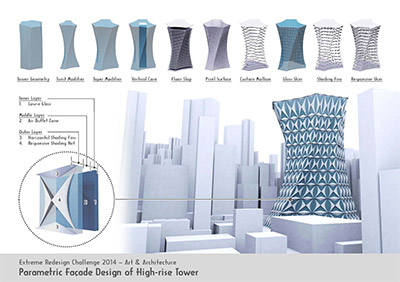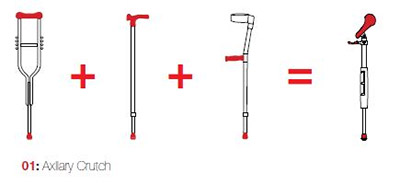
Stratasys’ annual student 3D design contest has ended with the announcement of winners in all categories.
In all some thirteen prizes were awarded in four categories. First, second and third prizes in “Art & Architecture”, “Middle / High School Engineering”, “College Engineering” and one prize for a new category, “Extreme Sports”.
The contest involves open entries from anywhere in the world, so long as they are practical 3D designs that can be 3D printed. Judges selected the most interesting and useful designs, with winners receiving scholarships of varying levels and their institution’s instructors being given access to a high-power 3D printer for a time. It’s all to encourage design and engineering students, who could all potentially be Stratasys customers in the future.
You can check out Stratasys’ extensive descriptions of the winning entries at the link below, but we found these entries most intriguing:
Art & Architecture 2nd Place: Parametric Facade Design of High-Rise Tower by Ka Ian Ng of Hong Kong
This building design reduces a problem we didn’t even realize we had:
The curtain panel system of the building façade composes of glass panel and mullions, these reflective materials create serious light pollution, which has done considerable harm to the environment…. This re-design product addresses environmentally responsive architecture, where the building envelope adapts to the sunlight effect.

Middle / High School Engineering 1st Place: Socket Gun Attachment by Macro Angione of Windsor, Ontario, Canada
We need this, and we need it NOW. It’s an amazing design that uses a simple system of gears to simultaneously remove (or mount) five bolts on a vehicle wheel. Powered by a hand drill, this is an incredibly good idea.

College Engineering 3rd Place: Cane[a]ction by Tiffany Tse & Kate Gonashvili of Toronto
The Cane[a]ction is the juxtaposition of a crutch and a cane, enabling rehabilitating patients to instantly switch to the most appropriate mode depending on their capability. While no one in our office currently requires such an apparatus, we definitely would appreciate having the flexibility offered by this design.
Via Stratasys

